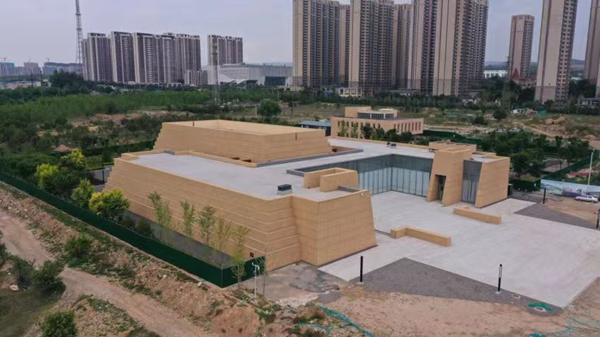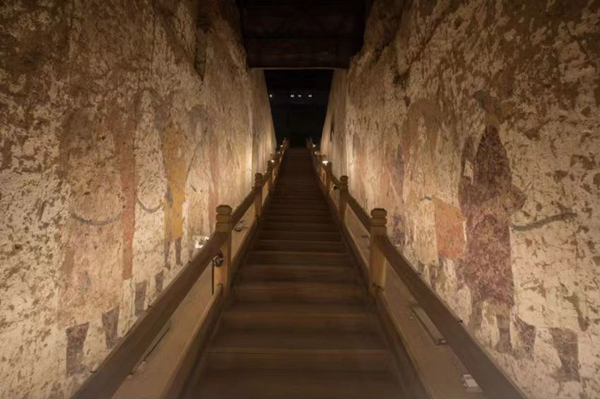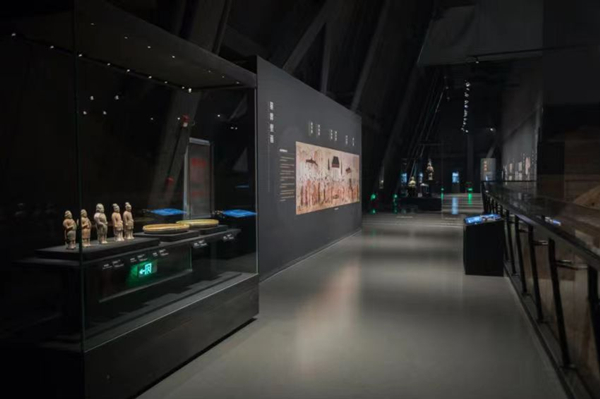
An aerial view of the Taiyuan Northern Qi Dynasty Mural Museum. [Photo/Yellow River News]
The Taiyuan Northern Qi Dynasty Mural Museum opened to the public on Dec 20.
Located in Wangjiafeng village, Taiyuan, the museum covers an area of 20,000 square meters. It is the first museum in China dedicated to the mural art of tomb sites. It was built based on the preservation and exhibition of Xu Xianxiu's Tomb from the Northern Qi Dynasty (550-577).
Xu Xianxiu's Tomb, which dates back over 1,400 years, was unearthed in October 2002 and was recognized as one of the "Top 10 Archaeological Discoveries of 2002" in China.

Murals on both sides of the passage in Xu Xianxiu's Tomb. [Photo/Yellow River News]
It contains more than 300 square meters of murals from the Northern Qi Dynasty. These murals represent the highest level of painting at that time and vividly depict the unique social customs and scenes of daily life during the dynasty, providing evidence of Taiyuan's historical significance.
The museum is divided into three exhibition halls.
The first hall showcases the unearthed tomb murals from the Northern Qi Dynasty, highlighting the important position held by ancient Taiyuan and presenting the social customs of that era.
The second hall is dedicated to Xu Xianxiu's Tomb, displaying the archaeological discoveries, the original site, and the scientific preservation of the tomb and providing a detailed account of its historical background.
The third hall showcases the cultural characteristics of ancient Taiyuan and the artistic features of murals in the Northern Qi Dynasty.

A view of an exhibition hall of the Taiyuan Northern Qi Dynasty Mural Museum. [Photo/Yellow River News]
The museum also uses digital technology to showcase the vibrant colors of the millennium-old murals. Visitors can stand beside the burial mound and use 4K VR glasses to get a panoramic view of the tomb, immersing themselves in the splendid and luxurious life of the nobility more than 1,400 years ago.
